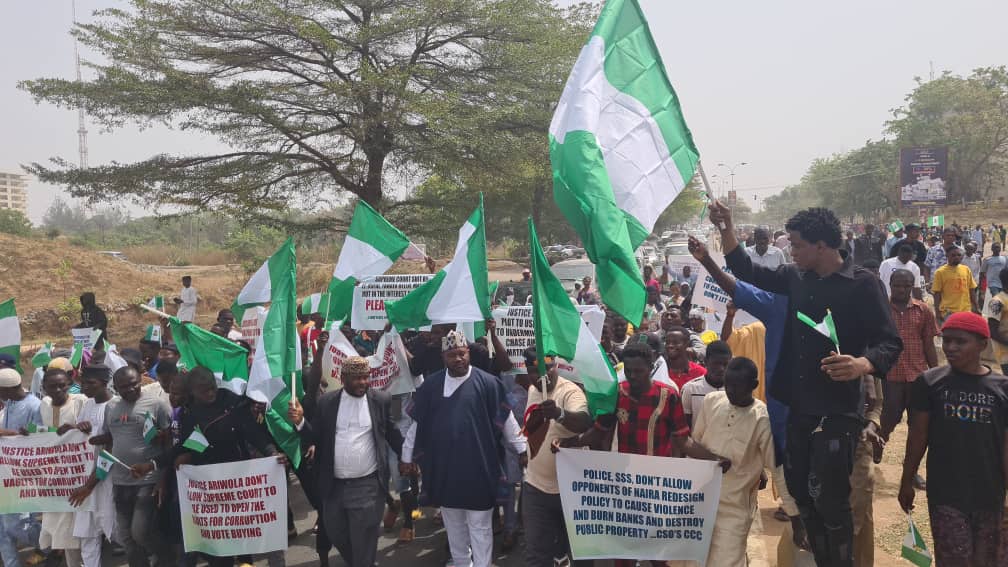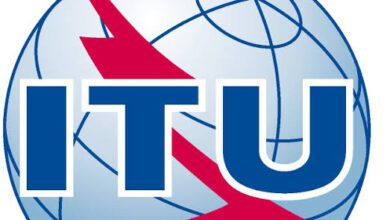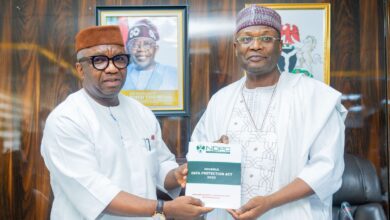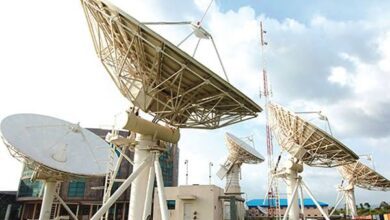OPINION: Poor Communications In Displaced Persons, Refugee Camps

Access to telecommunications facilities in camps occupied by displaced persons globally remains a nightmare.Whether via satellite,mobile or terrestrial connectivity,the result remains the same.The people are left to their devices as very little happens to cushion their communications needs.
Whether in Nigeria or elsewhere in the globe,the story is not different. Records show that by the end of 2022, no fewer than 71.1 million people in 110 countries were dislaced. Of this number,62.5m in 65 countries were dislaced through conflict and violence while 8.7m in 88 countries and territories were displaced through disasters.
These figures were recorded by 2022 calculations but sure ,there is a rise no doubt as a result of the war going on in Ukraine courtesy,Vladimir Putin,the Russian war lord who now wears the cap of Adolf Hitler who wanted to rule the world and his inordinate ambitions led to a world war and losses of millions of lives and millions displaced.
So far,the Russian invasion of Ukraine since February 24,2022 has led to the death of several thousands and millions displaced thus adding to the long list of displaced persons in the world. Data from Internal Displacement Monitoring Centre(IDMC), shows IDPs figure stood at 3.6m by end of 2022 in Nigeria.This figure is part of the 71.1m global record.

The vulnerability of these people was made worse by inadequate communications thus leading to questions being asked by IDMC.Why does the number of IDPs keep increasing? And it explains this saying “ rapidly escalating conflict and violence in countries such as Ukraine and Democratic Republic of Congo (DRC) and significant disasters such as flooding in Pakistan forced millions of people to flee in 2022. They joined the tens of millions of people already living in prolonged displacement as a result of protracted conflict, repeated disasters and a lack of durable solutions.”
On ”What is needed to reduce the number of IDPs? IDMC thinks: “Supporting IDPs to return, integrate locally or resettle elsewhere in their countries is essential. Better data and evidence on solutions are key to informing tailored prevention and response that allow us to effectively measure the end of displacement. Conflict resolution, peacebuilding, disaster risk reduction, climate resilience, food security and poverty reduction must all be strengthened.”
As Governor of Borno State ,a worried Kashim Shettima was tempted to close down IDP camps in his state because of their vulnerabilities to further violence.Shettima is now Vice President of Nigeria and we believe he will revisit the IDP situation not only in Borno state but other parts of the country where they exist.
In terms of interventions , the United Nations High Commissioner for Refugees (UNHCR,)the UN Refugee Agency, together with the International Telecommunication Union (ITU) on July 4,2023,launched a transformative agenda to connect refugees around the world. Together, UNHCR, ITU and GSMA – the trade association for mobile operators – seek to ensure that all major refugee hosting areas have available and affordable connectivity by 2030, advancing the digital inclusion of over 20 million forcibly displaced people and local host communities.

After a joint visit to Ethiopia early in July,ITU’s Secretary-General, Doreen Bogdan-Martin and UNHCR’s Deputy High Commissioner Kelly T. Clements witnessed how digital connectivity is providing a lifeline and solutions for refugees and displaced people, helping them access mobile money, online health services, connected education and as an avenue to employment in the digital economy. Worried by what they saw, they made an urgent global call to action to increase investment and establish an enabling regulatory framework for providing connectivity to forcibly displaced and stateless people and the communities that host them.
In 2021 ,a joint letter between the two agencies “outlined a shared vision of a connected society that leaves no one behind, in line with the Sustainable Development Goals. “
“In Ethiopia we heard first-hand from refugee communities how much digital technology means to them, as crucial to their self-reliance and a way to connect to key services as well as loved ones,” said UNHCR’s Clements adding that “Many challenges remain. We must find affordable ways to connect the many forcibly displaced people who are still out of reach.”
“In Ethiopia, we’ve witnessed the ingenuity of refugee communities in finding whatever path they can to stay connected with society,” said ITU’s Bogdan-Martin, following a visit to a cybercafé in Bokolmayo, in Melkadida refugee camp. “These communities are asking all stakeholders to do their bit to expand access to meaningful connectivity so that they can enjoy a safe, satisfying, enriching and productive online experience at an affordable cost. ITU’s Partner2Connect Digital Coalition and the Global Refugee Forum can serve as important entry points for interested organizations and investors to pursue connectivity for all, including displaced people and their hosting communities.” UNHCR and ITU, together with GSMA – the trade association for mobile operators – have developed an ambitious pledge around Refugee Connectivity that seeks to mobilize investments and further policy commitments to include refugees into national frameworks and objectives around digital access for all through universal connectivity. This includes fostering an enabling policy and regulatory environment for both expansion of infrastructure and lifting regulatory barriers to individual access for displaced people. The three organizations will lay the foundation for advancing meaningful connectivity as both a community need and a cornerstone of digital transformation in the humanitarian sector. Driven by data, promising practices and through piloting new business models, our work will devise pathways for new sustainable solutions to get displaced communities online. Refugees fled their communities due to violence, Human Rights violations among others,IDPs stay within the borders of their own countries and remain under the protection and responsibility of their government.

UNHCR is using its decades-long expertise in protecting and assisting refugees to join hands with other agencies to also assist IDPs with a focus on protection, shelter, non-food items (such as blankets) and camp coordination/camp management.
In Nigeria, Boko Haram and other non-state armed groups as well as clashes between herders and farmers have pushed some 3.0 million Nigerians (as of November 2021) out of their homes, especially in parts of North-East Nigeria and the country’s Middle Belt, but increasingly also in North-West Nigeria.
Internal displacement in Nigeria is the result of a multitude of complex and often overlapping drivers and triggers, including recurring floods and protracted violence.
Most internal displacements in 2022 were associated with disasters, as the worst floods in a decade hit the country between June and November. The floods triggered over 2.4 million displacements, the highest disaster displacement figure in sub-Saharan Africa in 2022. Half of the displacements were reported in the southern state of Bayelsa in the Niger Delta region but the states of Anambra and Kogi were also heavily affected. Displacement camps in the north-eastern state of Borno were also flooded, forcing thousands of people already displaced by conflict and violence to flee again. The floods limited humanitarian access by damaging roads, bridges and infrastructure.
More than 676,000 hectares of farmland were destroyed, affecting essential crops such as rice and worsening food insecurity. At the end of 2022, hundreds of thousands of houses were still destroyed or damaged, meaning nearly 854,000 people were living in displacement, a significant increase from the 107,000 recorded at the end of 2021.
Around 148,000 internal displacements were associated with conflict and violence in 2022, the lowest figure since 2012. Attacks by Boko Haram and other non-state armed groups (NSAGs), which have been active in the north-east of the country since 2009, continued triggering displacement, but access constraints and insecurity have limited assessments to capture the full scale of the issue. The state of Zamfara, in the north-west, recorded the highest displacement figure in the country, reaching 48,000 movements. An additional 50,000 displacements occurred in the north-western states of Kaduna and Katsina, and the north-central state of Benue. The majority of them were triggered by attacks from alleged criminal groups or were the result of clashes between farmers and pastoralists.
While the new instances of displacement decreased in 2022, the total number of people internally displaced by conflict and violence as of end of 2022 was the highest since records began in 2013, pointing to a persistent lack of durable solutions. As 2022 concluded, Nigeria was home to 3.6 million IDPs, of whom 1.9 million were living in protracted displacement in the north-eastern state of Borno. In 2022, the government resumed the closure of IDP camps. In some areas, ongoing insecurity was reported, and there is insufficient data to ascertain the conditions of those who have left camps. In areas where humanitarian access is restricted by insecurity, IDPs are not able to receive aid, which increases their vulnerability, including food insecurity, lack of access to health and other basic services. This also exposes them to protection risks, including gender-based violence.






